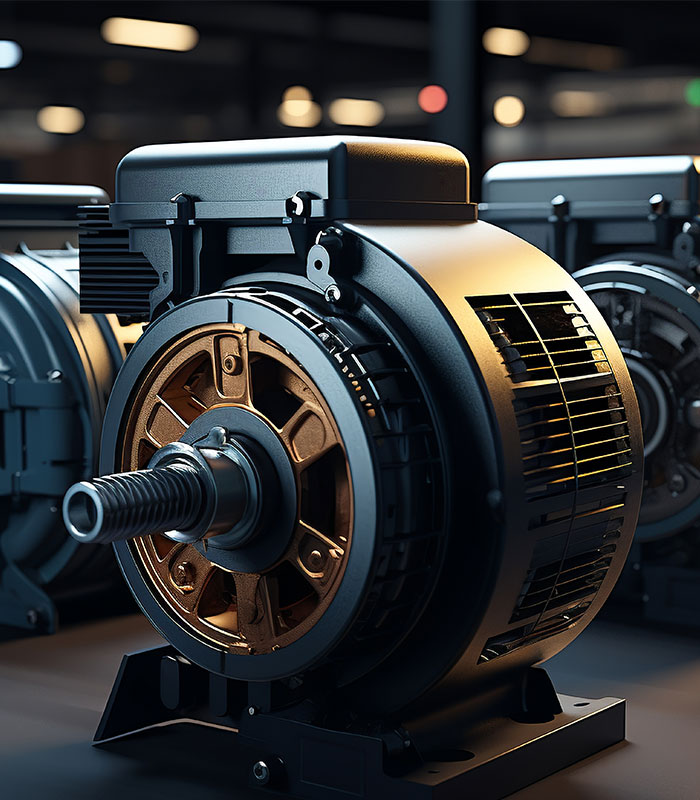Applications
Applications 01
An electric motor is a device that converts electrical energy into mechanical energy. It uses energized coils (i.e. stator windings) to generate a rotating magnetic field and applies it to the rotor (such as a squirrel cage closed aluminum frame) to form a magnetic electric rotational torque. Electric motors are divided into DC motors and AC motors according to the different power sources used. Most electric motors in the power system are AC motors, which can be synchronous motors or asynchronous motors (the stator magnetic field speed and rotor rotation speed of the motor do not maintain synchronous speed).
Applications 02
An electric motor is a device that converts electrical energy into mechanical energy. It uses energized coils (i.e. stator windings) to generate a rotating magnetic field and applies it to the rotor (such as a squirrel cage closed aluminum frame) to form a magnetic electric rotational torque. Electric motors are divided into DC motors and AC motors according to the different power sources used. Most electric motors in the power system are AC motors, which can be synchronous motors or asynchronous motors (the stator magnetic field speed and rotor rotation speed of the motor do not maintain synchronous speed).
Applications 03
An electric motor is a device that converts electrical energy into mechanical energy. It uses energized coils (i.e. stator windings) to generate a rotating magnetic field and applies it to the rotor (such as a squirrel cage closed aluminum frame) to form a magnetic electric rotational torque. Electric motors are divided into DC motors and AC motors according to the different power sources used. Most electric motors in the power system are AC motors, which can be synchronous motors or asynchronous motors (the stator magnetic field speed and rotor rotation speed of the motor do not maintain synchronous speed).



